Australia So Much to See


Pimelea spectabilis, Bunjong, Banjine
A large white Pimelea flower with a pink touch to the centre and hairiness through
the flower head, on an upright stem. Flowers hang forward and slightly downwards.
September-October
Above left (bud) Lancelin,
coastal Wheatbelt region, Western Australia and above right Bridgetown, South West region. Pimelea spectabilis is found around
the Perth area and a little way into the Wheatbelt, as well as closer to the coast around the south west corner of the state and near
Esperance.
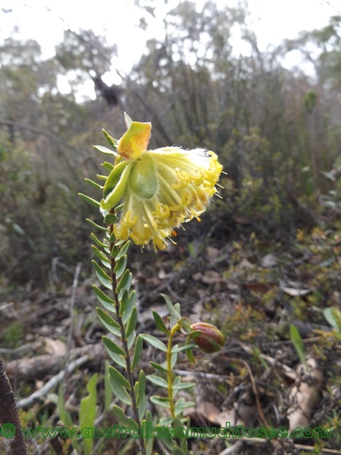
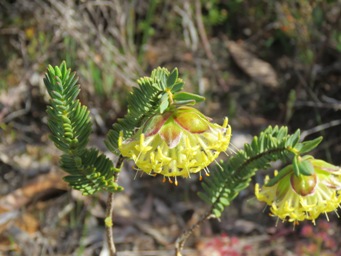
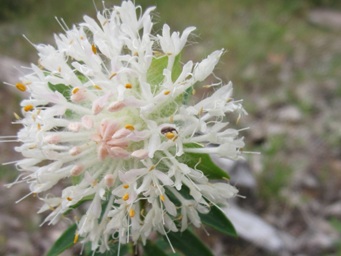
June
Seen near the King Edward River crossing on the Mitchell Plateau Road, Kimberley region, Western Australia, and found through the central and northern Kimberley, generally in damper areas.
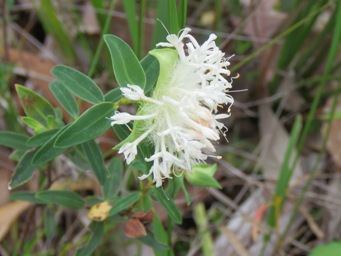
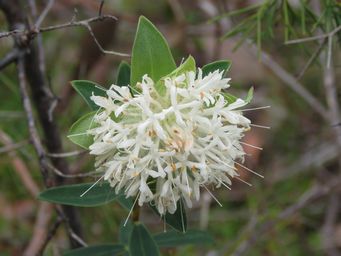
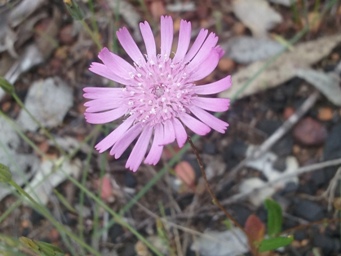
Podolepis aristata subsp. affinis 2015 (formerly known as Podolepis canescens), Button Podolepis, Grey Podolepis, Grey Copper-wire
Daisy, Bright Podolepis, Wrinkled Podolepis which generally applies to subspecies auriculata. There are three subspecies, and location
indicates subspecies affinis.
A bright golden yellow Podolepis flower, petals with three points at the tip. Bulbous base
of flower has shiny light green scaly bracts. Foliage elongated leaves stem hugging and tapering to a point at tip.
August
September
Sandstone and Ajana, Mid West region, Western Australia. Found in the Gascoyne region from Exmouth and Shark Bay,
through the Mid West, Wheatbelt, and in the Goldfields regions.
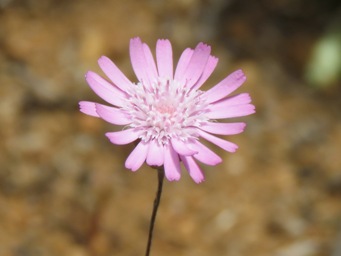
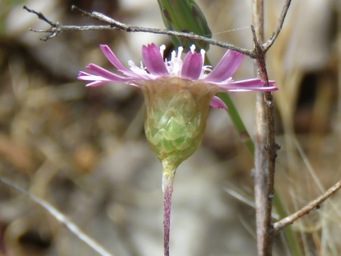

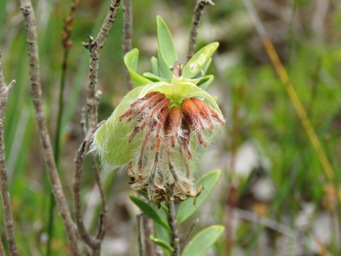
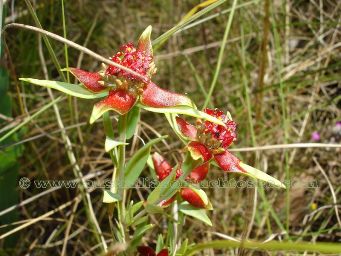
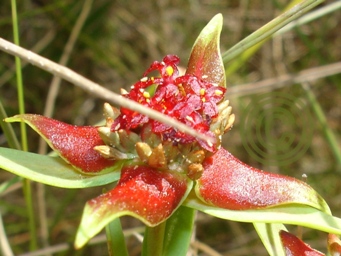
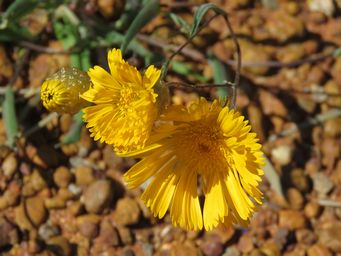
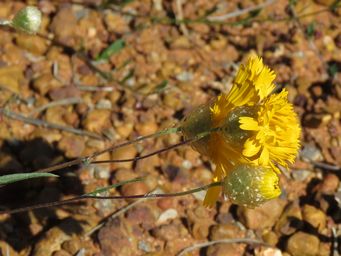
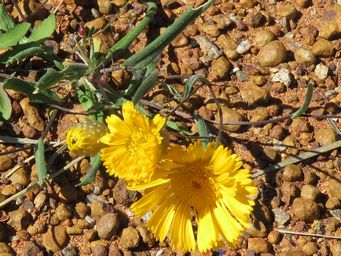
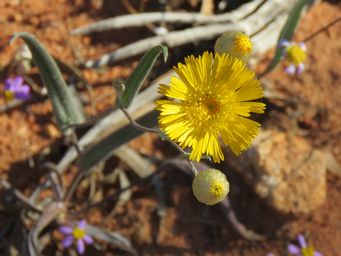

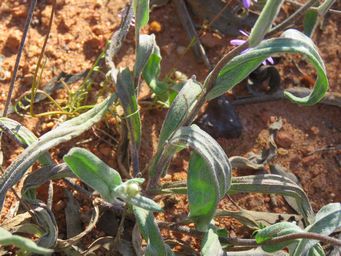
Podolepis gardneri
A bright golden yellow Podolepis flower, petals with three points at the tip. Bulbous base of flower has shiny
light green scaly bracts. Foliage consists of large elongated hairy leaves, stem hugging, and tapering to a point at tip and
curling backward. Stems are hairy.
August